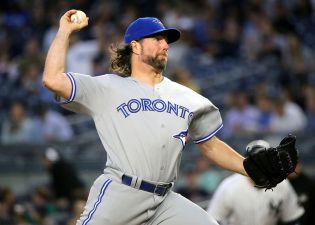This year’s World Series between the Chicago Cubs and Cleveland Indians was nothing short of an instant classic — simply put, you couldn’t have scripted it any better. But now that the dust has settled, it feels like an appropriate time to ask the question: What the heck is going on with the Atlanta Braves?
As the third-worst team in the MLB according to Pythagorean wins, the 2016 Braves missed out on the postseason for the third year in a row. The team’s three stars — first baseman Freddie Freeman, starting pitcher Julio Teheran and centerfielder Ender Inciarte — all did well, but they received little production beyond that. Atlanta ended up finishing more than 25 games behind the Washington Nationals in the National League East.
So on the surface, this isn’t an exciting team. But what kind of cellar dweller goes out and spends a combined $20 million on a pair of 40-something starting pitchers who can’t touch 90 miles per hour to save their lives?
Normally, that kind of expenditure would be unheard of for a rebuilding team, but the Braves surprised everyone last week, first signing knuckleballer and former Blue Jay R.A. Dickey to a one-year deal with a club option for 2018 and then poaching Bartolo Colon from the New York Mets. Those two will likely be slotted in behind Teheran and ahead of youngsters Matt Wisler and Mike Foltynewicz, giving Atlanta a solid, although unspectacular, rotation.
That’s all well and good, but neither Dickey nor Colon, both former Cy Young Award winners, are impact players at this point. What good can they do for a struggling team that scored just 649 runs in 2016?
Well, as it turns out, the Braves are more than just a struggling team. They actually have a remarkable stable of young talent, acquired mostly by virtue of a staggering rebuild begun after the 2014 season. Atlanta icons Jason Heyward, Craig Kimbrel, Andrelton Simmons and Justin Upton were all traded, but with young hitters like Dansby Swanson and Mallex Smith performing on both sides of the ball and the arms of Wisler and fellow starter Aaron Blair projected to develop further, the team is already benefitting from these deals and others like them.
The Braves also have a number of top prospects waiting in the minors.Add it all up, and it doesn’t look like they’ll remain a last-place team for long.
While there’s no telling whether Dickey and Colon will be a part of the next contending Braves team, the front office can be reasonably sure that the squad will be back in the playoffs at some point within the next five years. In the meantime, the two veteran starters can provide mentorship and advice to players like Wisler and Blair. Plus, when your team’s projected payroll is barely over $50 million, you can spend freely, especially if the potential payoff is 400 innings of league average pitching.
Ultimately, these signings won’t make or break the Braves. Colon and Dickey will do their part, but if Atlanta succeeds next year, it will be because of its younger players.





